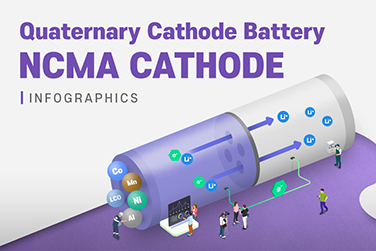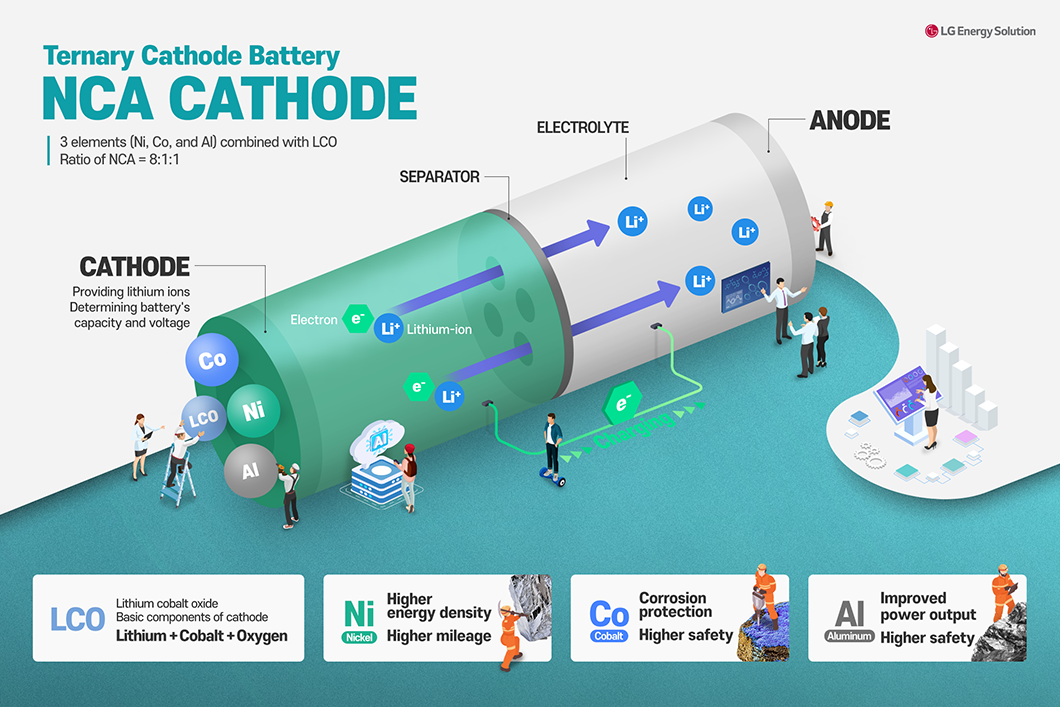A lithium-ion battery is largely made up of a cathode, anode, electrolyte, and separator. The cathode is a key component that plays an important role in determining battery performance. It comes in various types depending on the combinations. Among them, we will learn about “NCM cathode” with the infographics.

Cathode, a determiner of battery capacity and voltage
A lithium-ion battery generates electrical energy through a chemical reaction from the movement of lithium ions between the cathode and anode. It is charged when lithium ions in the cathode go to the anode through the electrolyte. And it is discharged when the lithium ions in the anode travel back to the cathode since the movement enables electric current to flow through the external circuit. In this process, the cathode determines the battery capacity and voltage.
Ternary Cathode Battery, the result of a combination of three cathodes
The lithium metal oxides* often used for the cathode of lithium-ion batteries include lithium cobalt oxide (LCO), which consists of lithium, cobalt, and oxygen. Nickel and another metal element are added to LCO, creating a cathode with three elements, a “ternary cathode battery.” Widely known ternary cathode batteries include NCM and NCA.
*Lithium metal oxide (LiMO₂): Lithium is unstable in its elemental form, so it exists in the form of lithium metal oxides, combining with other metal elements.
NCM Cathode, offering high energy density
NCM (LNCMO) is a cathode material formed by combining nickel (Ni) and manganese (Mn) with lithium cobalt oxide (LCO). It consists of varying ratios of nickel, cobalt, and manganese and is widely used as a cathode material for electric vehicle (EV) batteries.
Nickel is a popular option for the battery cathode. The more a cathode contains nickel, the higher the battery energy density gets. Accordingly, the driving range of the EV on one charge also increases.
Cobalt prevents corrosion and improves stability of the cathode, playing an important role in batteries. The element takes up about 20% of battery production costs.
Currently, researchers are developing lithium-ion batteries with higher nickel content, replacing costly cobalt, in response to soaring raw material costs. A battery with 60% or more nickel content in its cathode is called “high nickel.”
Lastly, manganese contributes to enhancing battery stability.
We have looked at the composition and characteristics of the NCM cathode with the infographic. Next time, we will explore “NCA,” another type of ternary battery cathode.





